As the sun set over the foothills gently illuminating the full spring display that gives the City of Trees its name, researchers, lawmakers, experts and decision-makers from across the state gathered at Boise State’s Stueckle Sky Center. They discussed how to support Idaho’s water future together at the inaugural Spring 2024 BlueWater Initiative event. The goal of the evening was connection.
Idaho ranks 39th in the nation in population but third in water use, trailing only California and Texas. The state irrigates over three million acres of land – the fifth highest in the nation – and uses more water for irrigation than any other state except California. Its aquaculture industry produces more commercial Rainbow Trout than any other state but also requires the largest freshwater withdrawals for aquaculture in the U.S. On top of that, Idahoans rely on freshwater resources for drinking supplies and recreation. Idaho’s water is a critical and precious resource, and its management is highly complex.
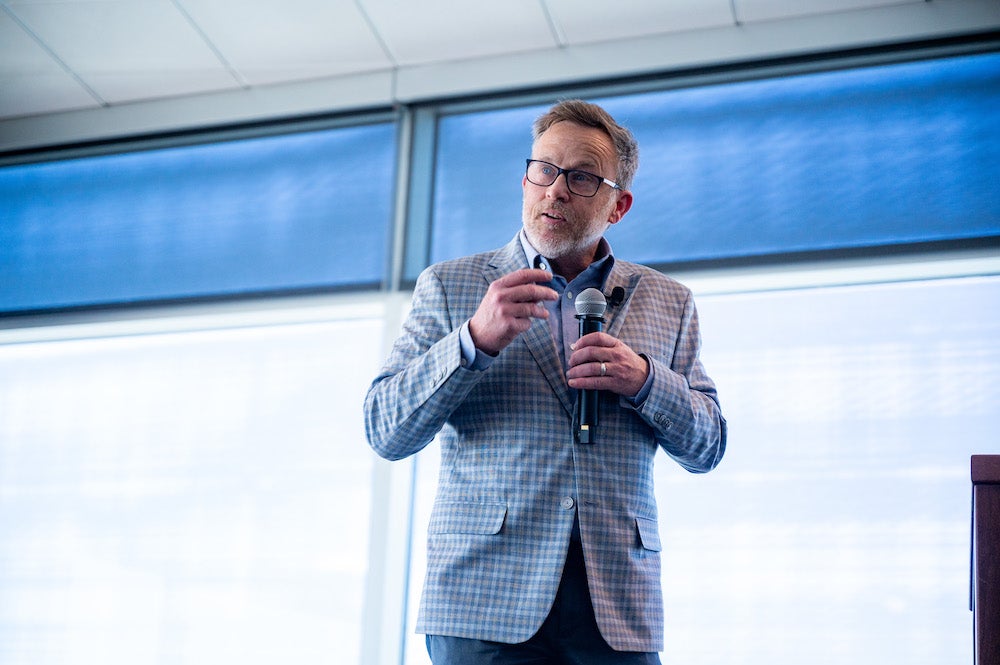
From Molecules to Mountains, Policy to People
Over 100 Broncos graduated with bachelor’s, master’s and doctoral degrees from Boise State’s suite of hydrology and hydrologic science programs, said James McNamara, a professor in Boise State’s Department of Geoscience who founded the masters program and was a key contributor to developing the two doctoral programs. Many of these graduates attended the event, and McNamara recognized their professional contributions to their state and local communities.
He also recognized Boise State’s 47 faculty who study water across 15 disciplines from molecules to mountains, policy to people.
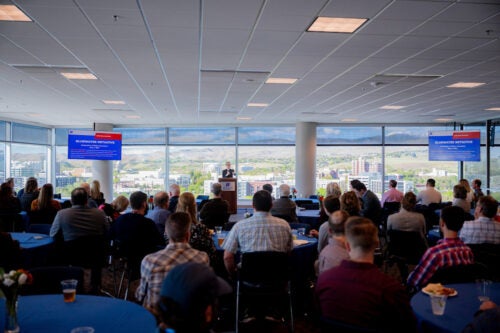
In the past decade, Bronco investigators conducted over $25 million of externally funded water research. With so many diverse studies and investigators with differing backgrounds, that impressive body of research can sometimes feel disjointed and spread out across campus. One goal of the Blue Water Initiative is to connect the people within the university.
“Because of the importance of water in society, every discipline claims it. And so it’s become fragmented. It’s an elective or maybe an emphasis,” McNamara remarked. “We are thinking, ‘Why are we so spread out?’ Let’s come together and see if we can take all these various programs and turn them into something bigger to better serve our students and our stakeholders.”
Co-Producing Research and Training a Workforce
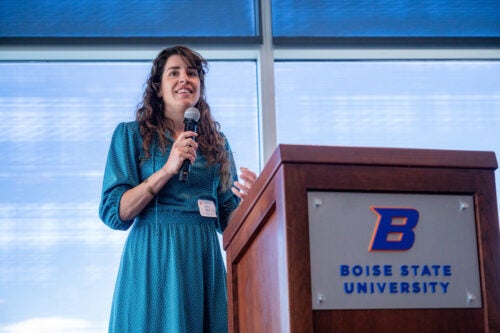
Bronco researchers already engage with over 45 external partners – state agencies, the national labs, the U.S. Forest Service and Bureau of Land Management, and local non-profits, as well as the cities of Boise, Meridian and Nampa, Native American Tribes, and even individual landowners – to co-produce research and train water resource professionals. The Bluewater Initiative streamlines the communications and hiring processes with external partners and co-produces research, collaboratively identifying research questions and developing concrete, tangible outputs that meet partners’ needs.
“Students need to be out in the world getting experience and information from the people that work on the land and understand the land to come up with new and novel solutions,” said Kendra Kaiser, the University of Idaho director of the Idaho Water Resources Research Institute and former research assistant professor in Boise State’s Department of Geoscience. “We want to embed our graduate students into agencies. How can we make that process efficient? How can we make it easier? When an agency says, ‘We have a project, we need a student,’ we want to get you a student as easily as possible.”
Moving From Ideas to Action
With these ideas on the table, Mark Weaver, director of the Idaho Department of Water Resources, and Scott Bedke, Idaho’s lieutenant governor, presented their visions for advancing water research, education and community engagement in Idaho.
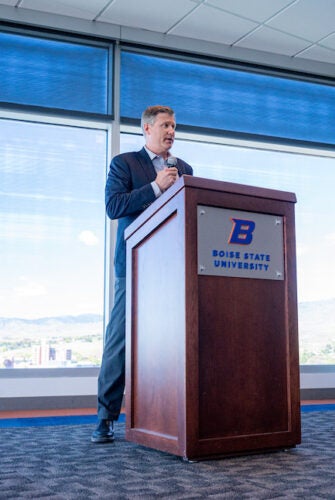
Weaver noted that the Idaho Department of Water Resources received historically large amounts of funding over the past several years. This funding supports water sustainability, infrastructure improvements, flood management, and research and modeling projects throughout Idaho. He also presented concrete examples of ongoing state activities and projects where trained water resource professionals are needed, explaining the kind of academic training that would benefit those workers.
“That’s a long list of needs that my department has,” he said. “It’s only through these partnerships that I think we can get it all done. But we must have the right students in these academic environments interested and wanting to do research because it’s certainly not something that my department can do alone or even do at the current partnership levels that we have.”
Bedke shared some of his own experiences in negotiating and mediating water rights and water management issues in Idaho. He encouraged every stakeholder in the room to work together to make strategic decisions and plans that can be presented directly to the state legislature from a united water community. And he stressed the importance of time.
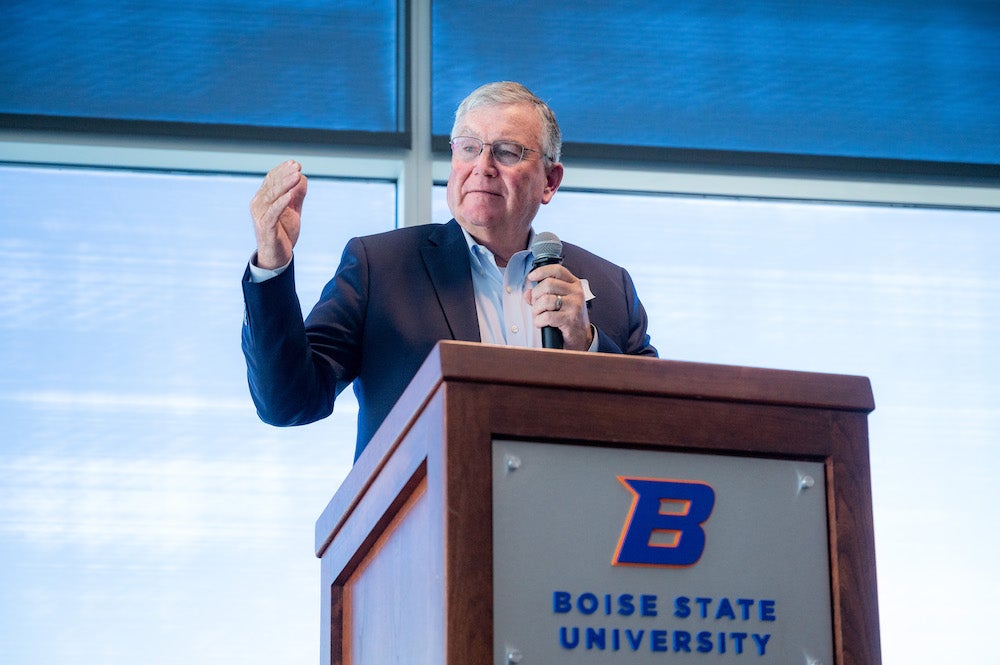
“We live in the fastest-growing state in the nation,” Bedke said. “And just because we are doesn’t mean we’re going to get more water. We’re going to have to live with what we’ve got here. And the longer we wait to make strategic decisions, the fewer options we’ll have. I guess that addresses what Benjamin Franklin said, that we’ll know how much the water’s worth when we get to the bottom of the well.”